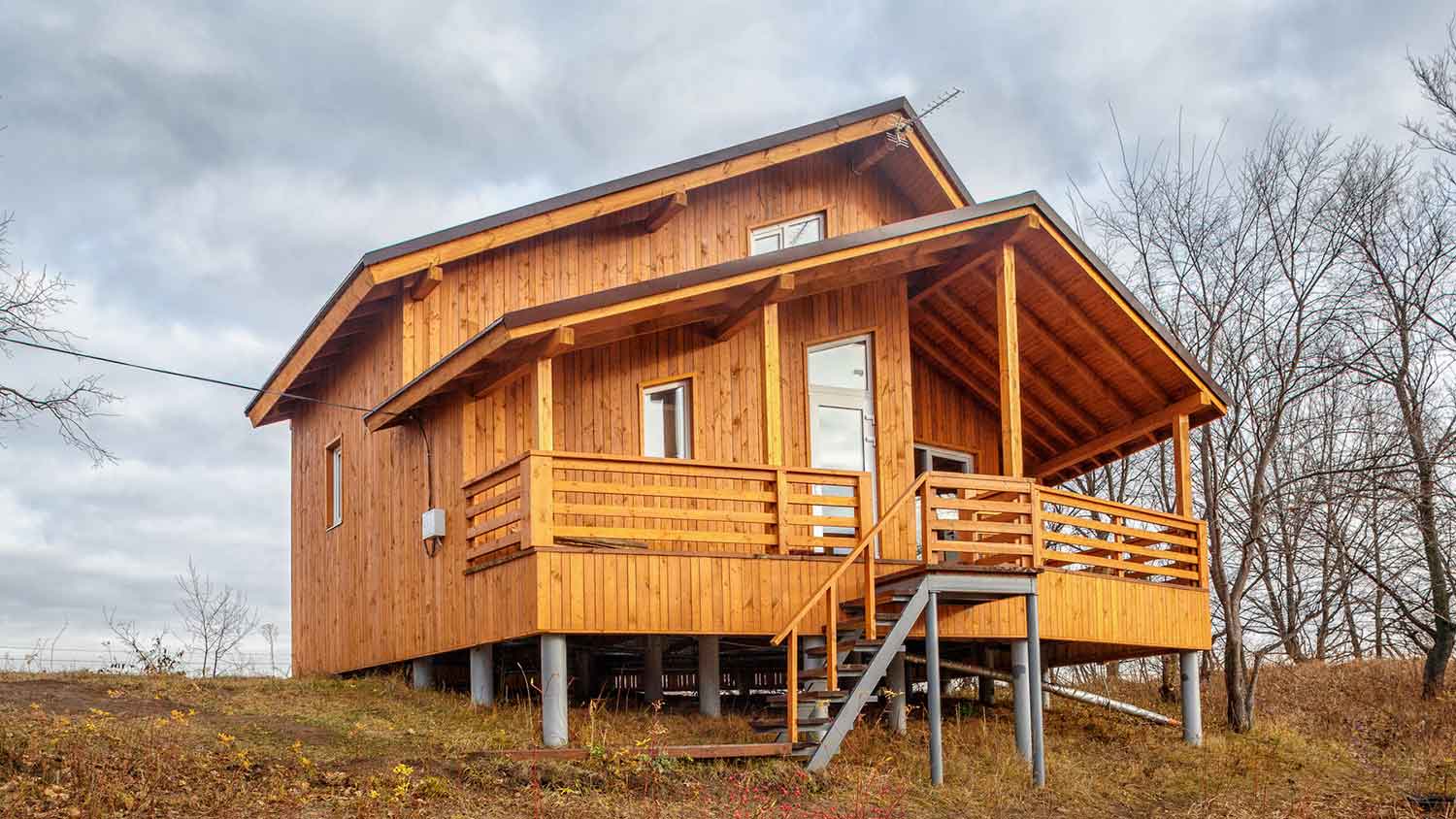8 Tips to Avoid Foundation Repairs
Alright, houses, let’s stay on foundation


A structurally sound foundation keeps your home insulated, dry, and on steady ground. However, the cost of foundation repairs is relatively expensive at $4,530 on average. There are more exciting home improvement projects to work on, like giving your bathroom a new coat of paint or installing that subway backsplash you love. In this guide, you’ll find helpful tips for avoiding foundation repairs so you can get back to choosing paint colors.
1. Water Your Foundation During Dry Seasons
Watering your foundation sounds a little unnecessary, but when the soil around your foundation dries out it contracts—which is standard for clay soil—and can lead to an unstable structure. Constant contracting and expanding can cause cracks in your foundation since it’s pulled in multiple directions. You can prevent foundation damage caused by shrinkage by watering your foundation during dry seasons.
2. Install French Drains
Besides too dry ground, another problem that causes foundational damage is excessively wet ground. When water pools near your foundation, it can cause the soil to expand and become unstable, leading to cracks in your foundation. A solution you can use to combat this is to install french drains. French drains are gravel-filled trenches that’ll flow water away from your home’s foundation, typically downslope to an area of your choosing.
3. Gutters and Downspouts Are Essential
Water typically pools around your foundation because of rainwater and runoff from the roof. Another solution to combat this issue is to install good gutters and downspouts that will move moisture off the roof and away from the foundation. When your gutters are clogged, they can’t carry the rain and runoff water away as efficiently, so periodically check on them to ensure they’re working as intended.
If highly expansive clay soil surrounds your home, your foundation might benefit from a tight-line downspout drain system to carry the runoff away. Since a downspout drain system will prevent excess water from coming into contact with the clay soil, it may help you avoid extra stress on your foundation from the soil contracting.
4. Ensure Your Home is Properly Graded
When your yard’s improperly graded or not graded at all, it can lead to structural damages. With a yard that’s sloped towards your home, water flows towards your foundation. If your yard’s not sloped at all, water tends to sit where it falls. Another way to avoid foundational damage is to regrade your yard at 6 inches per 10 feet.
5. Don’t Plant Trees Close to Your Home
Tree roots require space and water to grow, and roots can push into your foundation and cause shifting and cracking. During dry seasons, roots will pull water from the surrounding area, which can cause the soil around your foundation to dry up and not provide adequate moisture to remain on stable ground. Don't plant trees too close to your home to steer clear of foundational damages from a tree.
6. Strategically Position Your Sprinkler System

You want your sprinkler system to work for you and not cause more problems you’ll have to fix. Ideally, your sprinklers should keep your ground moist enough that you won’t have to worry about your foundation becoming unstable. But balance is key, so don’t oversaturate your foundation and the surrounding soil. Position your sprinklers where they can keep your lawn and foundation moist without flooding it.
7. Waterproof Your Foundation
While concrete foundations aren’t waterproof, that doesn’t mean you can’t waterproof yours to prevent water damage. A few waterproofing methods you can use are damp proofing, french drains, or sump pumps. The method you choose will depend on the current state of your foundation and your circumstances, so it’s best to contact a foundation repair company near you for personalized assistance.
8. Schedule an Annual Foundation Inspection
The best way to prevent excessive damage is to spot it in the early stages. Schedule a foundation inspection once or twice a year. Having a foundation inspector regularly come out and assess the condition of your foundation means they’ll be able to immediately spot any damage and quickly strategize a solution to fix the issue.





- 11 Foundation Maintenance Tips to Keep Your Home Standing Strong
- 7 Tips for Protecting Your Home’s Foundation
- 11 Warning Signs of Foundation Issues
- Your Guide to Dealing With Foundation Drain Issues
- What a Foundation Inspection Is and How to Check Yours
- Should You Water Your Foundation?
- Can Standing Water Damage Your Foundation?
- 8 Common Causes of Foundation Cracks
- 6 Sinking Foundation Signs and What to Do Next
- 10 Reasons You Really Shouldn't Delay Foundation Repairs










